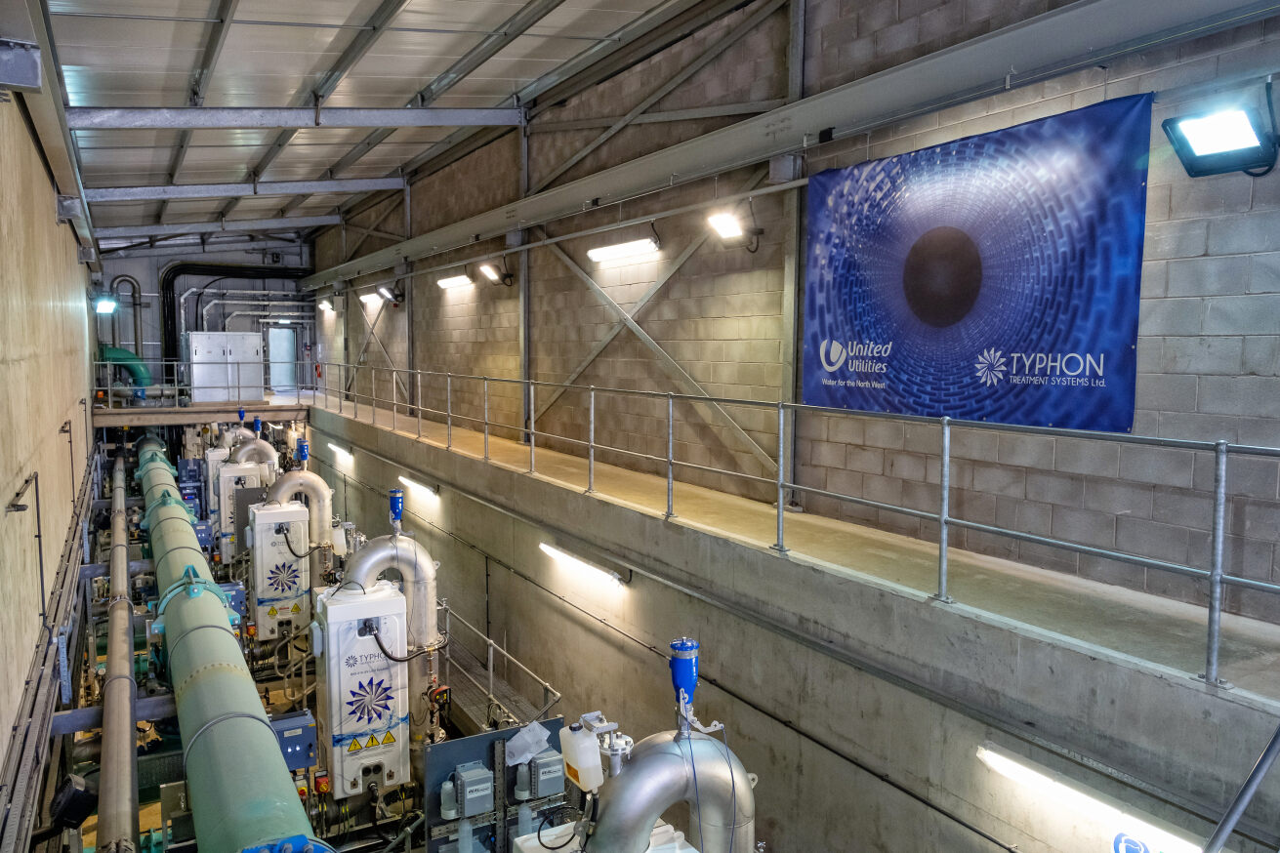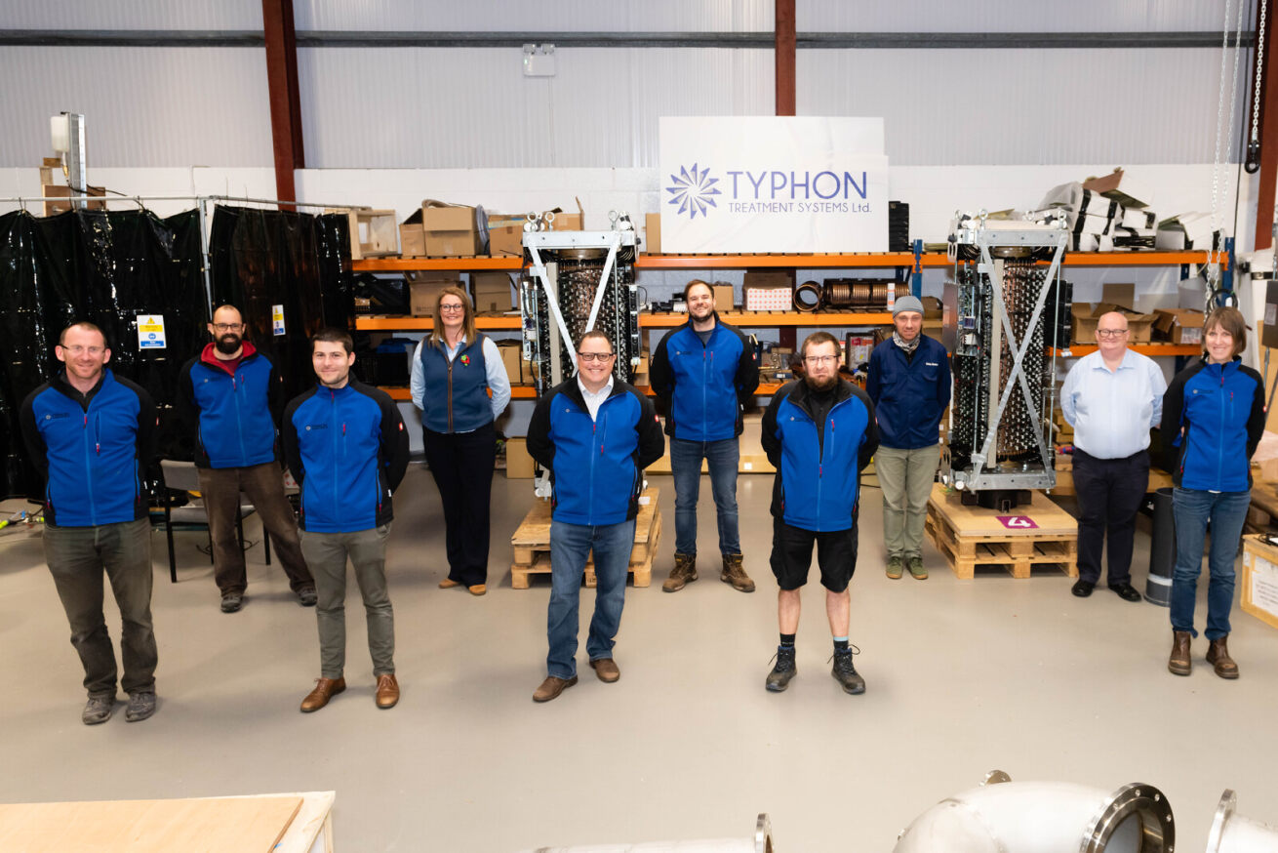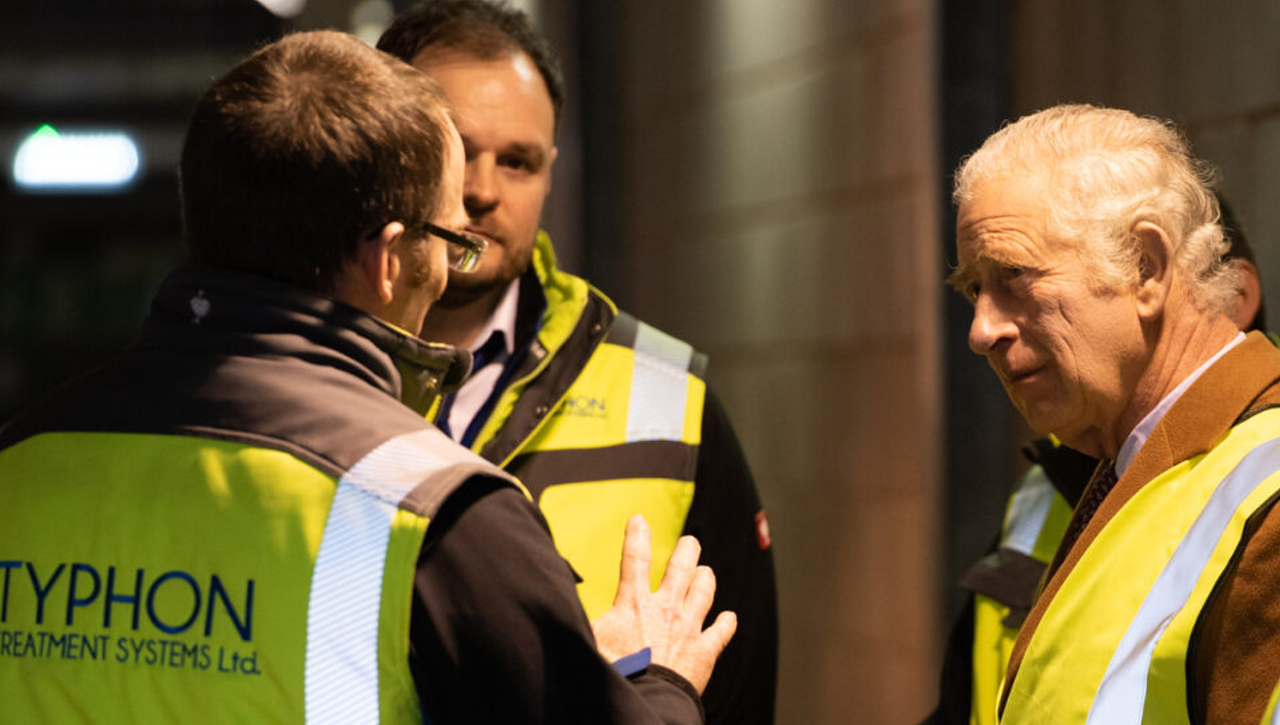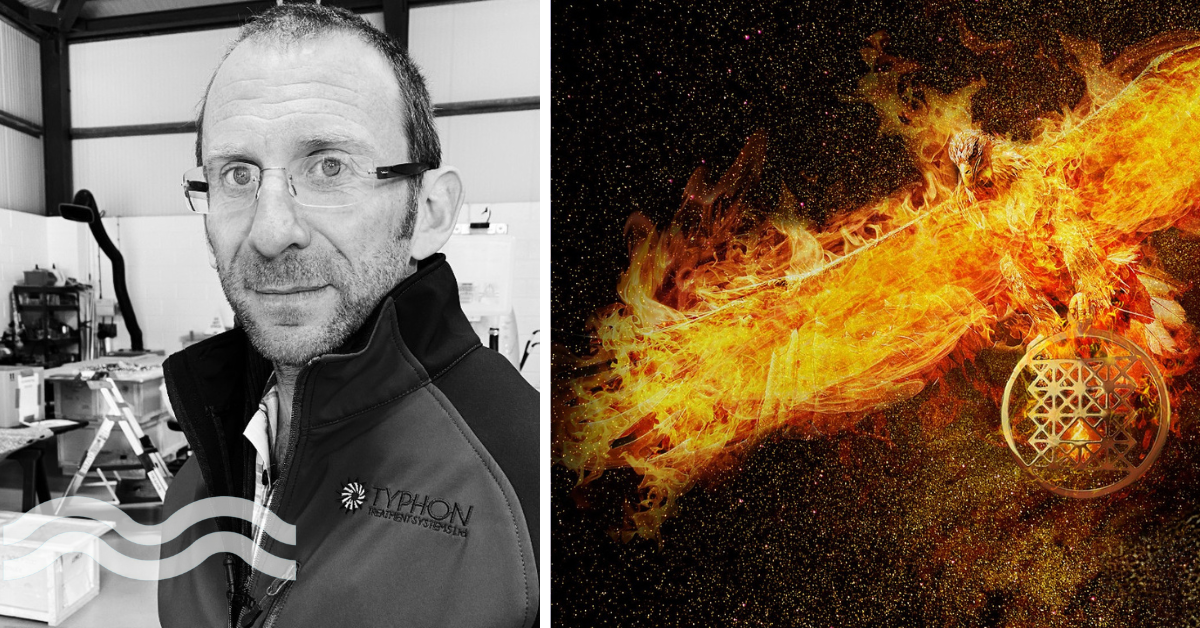Rising like a LED phoenix: Matt Simpson’s story of failing and bouncing back
Rising like a LED phoenix: Matt Simpson’s story of failing and bouncing back
We often hear about water success stories but what about the failures? In this exclusive Aquatech Online interview, Matt Simpson tells the tale of founding a water tech company in the UV-LED space, why things went wrong and why he’s bounced back. Tom Freyberg reports.
The valley of death
How often do we hear success stories of founders and entrepreneurs in the water technology space?
CEOs who found, scale and then sell their businesses and dance happily into the sunset. Companies being acquired, and eventually lost amid juggernaut companies. Or the same case study "successes" repeated time and time again?
Yet, how often do we hear stories of failure? And not stories or rumours whispered on the sidelines of industry events. But told publicly?
Start-up companies in this space have historically come and gone. There are well-known examples of companies falling into the "valley of death", running out of cash, selling on their IP, exiting the market, and the CEO never to be seen again in the water market.
Yet, Matt Simpson's story is different. Rather than running to another industry with his tail between his legs after his company went into administration, the former co-founder and CEO of Typhon Treatment Systems is back in the water market.
This story is from his time at Typhon Treatment Systems- a company poised to be a posterchild for the large scale deployment of UV-LED technology.
First told publicly during the infamous 'F**K Up nights', part of the Aquatech Innovation Forum, it's a story that could have the making of its own Netflix show; an emotive, personal founder's tale of throwing everything on the line and one that Simpson tells in his inimitable humble and articulate way.
The aha moment – genesis of Typhon
So, where did it all start?
The genesis for Typhon can be traced back to Southern Africa, where Simpson was working as a water consultant together with business partner Peter McNulty. Working for an organisation providing housing in Nigeria, they identified the need for an energy-efficient water treatment system.
"We worked out we had a three-year window to compete in the market, and then it would be time up."
Looking towards an ultraviolet disinfection (UV) solution, there was a need for an energy-efficient system, and in 2019, UV-C LED technology was emerging. While that particular project didn't work out, Simpson moved back to the UK and said he "couldn't get this idea out of my head – it's too exciting". After reconnecting with McNulty, the plan started to come together.
"The solid-state transition has dominated all other industries, so we thought surely there's an opportunity to create a new company to capitalise in this space," he recalls.
Together they started looking into the market – one Simpson calls "so regulated" and a "consolidated technology space with two or three major players with a commoditised product in the disinfection space".
The hope was pinned on UV-C LED technology – an alternative to amalgam lamp solutions, which had been the mainstay of the water disinfection market for decades. With Haitz's law forecasting that the performance of LED technology would continue to increase in parallel with the price decreasing, the LED stars were starting to align.
Like any founders at the time, the pair questioned themselves. How do we create a start-up in this market? Where on earth do we start? However, the answers began forming.
"Suddenly, if you have Haitz's Law that helps you look into the future of the technology and a concept for what your IP is going to be, you can start to time your business and say, we need X performance point to be able to deliver this product to be competitive.
"So we worked out we had a three-year window to compete in the market, and then it would be time up," he adds.
And so the Typhon journey began.
Seed funding
Like many start-ups, the company was financially kickstarted through a combination of the founders bootstrapping (self-funding), and securing grants. One of which came from Japanese UV-LED manufacturer, Nikkiso, who was looking to develop the technology.
"We did well as we were attaching ourselves to an emerging technology," reflects Simpson. "They recognised that as a supplier, they needed to be involved in virtual integration of the devices."
Nikkiso took two bets: US company AquiSense and Typhon. While they acquired AquiSense outright, they invested to kickstart Typhon's operation. At the time, AquiSense was more geared towards the point of use, point of entry, and consumer markets, whereas Typhon was targeting utility and industrial applications, which were seen as a longer route to market.
"The phone didn't stop ringing – everyone was interested in what we were doing."
Additional funding came from the Enterprise Investment Scheme (EIS) – the UK government tax scheme that makes risk-based venture investments. This enabled enough money in the bank to build and demonstrate a full-scale prototype.
"We were still loss-making, pre-revenue, but we had identified and secured an IP – there was market interest, and we had purchase interest from the first big UK utility client, United Utilities (UU)," says Simpson.
Engagement with UU had happened through the utility's Innovation Lab, a programme designed to help co-develop start-up solutions, providing access to part of the water utility's infrastructure and team.

Typhon then needed to scale to move into manufacturing a device, and ran a Series A investment campaign, securing "significant" capital from the Saudi Aramco Energy Ventures, the investment arm of Saudi Arabia's oil giant.
With money in the bank and a first significant contract in the pipeline, things were looking positive. So what happened?
The problems begin
It was towards the end of 2019 that the company received its purchase order, just as the COVID-19 pandemic kicked in. Not only was there the challenge of recruiting and building a team during periods of lockdown, but they were also trying to build equipment and run a team with two fully COVID-compliant teams in two separate bubbles across day and night shifts.
At the time, McNulty was CEO, but the company desperately needed to develop technical, corporate, financial and sales capacity – pretty much the entire infrastructure of the business. Add the pandemic situation into the mix, and it became tricky to make progress across all of those areas.
The good news was that interest in the business and what Typhon was doing remained high. "The phone didn't stop ringing – everyone was interested in what we were doing," says Simpson.
Despite the headwinds, progress was made. The team delivered the UV-LED equipment, fully factory and site acceptance tested, to the UK utility. To do this, Typhon went from a garage start-up to a team of 18 professional staff with a payroll of tens of thousands of pounds.
"We provided one line in the chain – for us to succeed, the whole chain needs to be demonstrated. However, at that time our clock is ticking and our burn rate is massively elevated."
While declining cash reserves from an accelerated burn rate can be shored up by sales and new revenue, this didn't happen. "We had a huge amount of interest but not many sales," he adds.
"There is an expectation that companies like ours can hatch fully formed."
While this would be a stage for the company to start thinking about raising its next round of financing, a Series B, it would be expected to turn to existing investors. However, naturally, investors want to see new incoming sales meeting revenue predictions. As this wasn't happening, it became a challenge.

"We then had to raise a Series B, which is a way of validating the company, the vision and the natural progression from the initial investment. But we needed to scale the business to able to handle new contracts."
The classic chicken and egg analogy when growing any business – investing in the team and infrastructure to grow revenue when revenue is needed to make this happen.
The Evel Knievel analogy
During his story at the 'F**K Up Nights,' Simpson used the analogy of the American stunt performer and daredevil Evel Knievel. He was a well-known entertainer who, throughout his career, attempted more than 75 ramp-to-ramp motorcycle jumps.
The comparison describes that when it comes to innovation, ecosystems are currently set up to help launch and springboard companies, but what about the landings? What about helping them to evolve to the next stage of development?
"When you get passed "over the fence" from the innovation team to the commercial team, the additional demands can throttle a scrappy start-up."
"When you go through an innovation door, there's lots of collaboration, sharing, and support for SME companies," he says. "But there is then an expectation that you just go through the next commercial door. There is an expectation that companies like ours can hatch fully formed."
Simpson adds that delivering a one-off prototype often requires a small group of people, bootstrapped, with low resources. However, when you get passed "over the fence" from the innovation team to the commercial team, the additional demands can throttle a scrappy start-up often lacking the workforce to meet the necessary bureaucracy.
"We went from three engineers to needing to build a team with compliance officers, someone who can produce ISO approved schemes – suddenly we had to start building an entirely new team."

Simpson remains quite pragmatic on this challenge. He suggests that if water companies or industrial companies could provide more support in meeting the bureaucratic requests, then it would help start-ups and the "whole innovation process" could be improved.
"When you get to the end of an innovation process within a single utility, I think that's where you should be handed to a regulator-driven commercialisation process and team."
New management and cutting back to the bone
With ongoing commercial challenges, the company's board hired a new CEO to bring in commercial discipline and increase sales. Simpson remained as managing director.
Things didn't work out with the new CEO – he was in place for 11 months. He was let go by the board after submitting his refinancing plan and a strategic disagreement.
Fast forward to January 2022, and Simpson was back in the driving seat with very limited left in the bank. His new rescue mission? To get the burn rate down and urgently raise cash to keep the ship sailing.
While there was much interest, the money failed to materialise. Existing investors decided not to reinvest into the business. Now into the final few months of 2022, without a term sheet, the company had to "start cutting to the bone," he says.
"You were having to let the team that you hired personally go, scale back completely and basically cut all costs."
The company found itself in a challenging position. Urgently needing to cut its expenditures, it had also cut the team that would be required to help bring in new revenue.
And with the "spectres that are coming over the hill at you", as Simpson describes it, the company had to be extremely careful agreeing to take on projects (and much-needed revenue) when it was unlikely to be in a position to deliver them—a proverbial catch-22.
"It's ironic that the thing which ultimately killed us was the fact that somebody wanted to buy something from us," he laments.
Rising like a phoenix: the birth of NUUV
Despite the story and the battle scars from his company going into liquidation, Simpson is back with a new venture – NUUV.
"Some great work was done, with validated technology proved and a market found with customer interests," he says excitedly. "Those are all great things for starting a new company, so that is what NUUV is all about."
The knowledge, experience and value created has been bought out from Typhon by a management team into a restructured start-up, which he says has "a lot more skills and experience, commercial acumen and knowledge on building a successful company in water".
"We failed for commercial reasons, not technical reasons."
Two engineers, including the process and also the electrical and electronic engineer from Typhon are part of the NUUV team, which Simpson describes as "the team that delivered the validation and technical milestones of Typhon are with the new company". The IP and rights from the old company are now owned by the new.
When linking the past to the present and future, it would be easy for Simpson to perhaps be hesitant. Once bitten, twice shy. Yet, he remains pragmatic.
"We failed for commercial reasons, not technical reasons," he adds. "Typhon was a start-up built to supply municipal scale equipment, which succeeded technically in producing and validating the world's first municipal equipment, but failed commercially to create a vehicle that could service those customers. We're coming back with a very different vehicle."
The new organisation will focus on process water, environmental monitoring and treatment technologies for industrial applications. A very different business strategy out the gate to Typhon, shifting from a utility target market to an industry.
To date, conversations and activities have included pharmaceutical and aquaculture companies with businesses already in South Korea. Furthermore, investors Simpson was previously talking to who thought the Series B raise for Typhon was too much are now interested in the seed phase of the new business - in other words, getting in early to a technology that has been proven.
Moving forwards
When talking through the events, it would be easy for Simpson to be resentful and blame the market, or sales, or customers as the reasons for Typhon's downfall. Yet he doesn't.
There's not a single ounce of blame or arrogance in his voice. Like any genuine leader, he absorbs the blame on his own shoulders but is bullish on making sure other founders scaling companies do not take a similar path. Hence this is the first time, in detail, that the story has been shared.
This story may not have the glamour of a unicorn headline – a start-up scaling up to a billion-dollar valuation and being sold to a juggernaut multinational. Failure stories are gritty, raw and often challenging to hear.
Yet it's also necessary to spread the word to make sure that bright eyed, often unaware new founders keen to take on the water market are prepared for what's coming. It's bloody hard work, and doesn't often work out.
Kudos to Simpson for openly talking about this. He's thankfully back in water, battle scarred but motivated even more to make his next venture succeed.
- Tom Freyberg is an environmental journalist and content director for Aquatech Global Events.
We promise never to send you spam and you can unsubscribe at any time!
